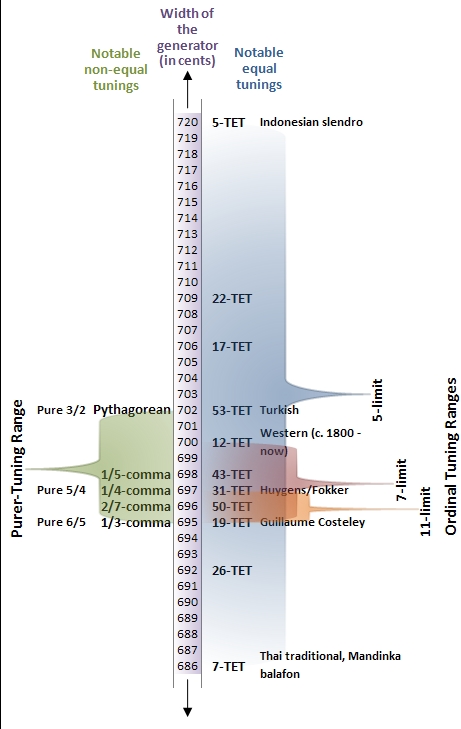17 equal temperament on:
[Wikipedia]
[Google]
[Amazon]
 In music, 17 tone equal temperament is the tempered
In music, 17 tone equal temperament is the tempered



"The 17-tone Puzzle — And the Neo-medieval Key that Unlocks It"
by George Secor
Libro y Programa Tonalismo
heptadecatonic system applications (in Spanish)
Georg Hajdu's 1992 ICMC paper on the 17-tone piano project
* , by Wongi Hwang {{DEFAULTSORT:17 Equal Temperament Equal temperaments Microtonality
 In music, 17 tone equal temperament is the tempered
In music, 17 tone equal temperament is the tempered scale
Scale or scales may refer to:
Mathematics
* Scale (descriptive set theory), an object defined on a set of points
* Scale (ratio), the ratio of a linear dimension of a model to the corresponding dimension of the original
* Scale factor, a number ...
derived by dividing the octave
In music, an octave ( la, octavus: eighth) or perfect octave (sometimes called the diapason) is the interval between one musical pitch and another with double its frequency. The octave relationship is a natural phenomenon that has been refer ...
into 17 equal steps (equal frequency ratios). Each step represents a frequency ratio of , or 70.6 cents.
17-ET is the tuning of the regular diatonic tuning in which the tempered perfect fifth is equal to 705.88 cents, as shown in Figure 1 (look for the label "17-TET").
History and use
Alexander J. Ellis
Alexander John Ellis, (14 June 1814 – 28 October 1890), was an English mathematician, philologist and early phonetician who also influenced the field of musicology. He changed his name from his father's name, Sharpe, to his mother's maiden na ...
refers to a tuning of seventeen tones based on perfect fourth
A fourth is a musical interval encompassing four staff positions in the music notation of Western culture, and a perfect fourth () is the fourth spanning five semitones (half steps, or half tones). For example, the ascending interval from C to th ...
s and fifths as the Arabic scale. Ellis, Alexander J. (1863). "On the Temperament of Musical Instruments with Fixed Tones", '' Proceedings of the Royal Society of London'', vol. 13. (1863–1864), pp. 404–422. In the thirteenth century, Middle-Eastern musician Safi al-Din Urmawi developed a theoretical system of seventeen tones to describe Arabic and Persian music, although the tones were not equally spaced. This 17-tone system remained the primary theoretical system until the development of the quarter tone scale.
Notation

Easley Blackwood Jr.
Easley R. Blackwood Jr. (April 21, 1933 – January 22, 2023) was an American professor of music, concert pianist, composer (sometimes using unusual tunings), and the author of books on music theory, including his research into the properties of ...
created a notation system where sharps and flats raised/lowered 2 steps.
This yields the chromatic scale:
:C, D, C, D, E, D, E, F, G, F, G, A, G, A, B, A, B, C
Quarter tone sharps and flats can also be used, yielding the following chromatic scale:
:C, C/D, C/D, D, D/E, D/E, E, F, F/G, F/G, G, G/A, G/A, A, A/B, A/B, B, C
Interval size
Below are some intervals in 17-EDO compared to just.

Relation to 34-ET
17-ET is where every other step in the 34-ET scale is included, and the others are not accessible. Conversely 34-ET is a subdivision of 17-ET.References
Sources *External links
"The 17-tone Puzzle — And the Neo-medieval Key that Unlocks It"
by George Secor
Libro y Programa Tonalismo
heptadecatonic system applications (in Spanish)
Georg Hajdu's 1992 ICMC paper on the 17-tone piano project
* , by Wongi Hwang {{DEFAULTSORT:17 Equal Temperament Equal temperaments Microtonality